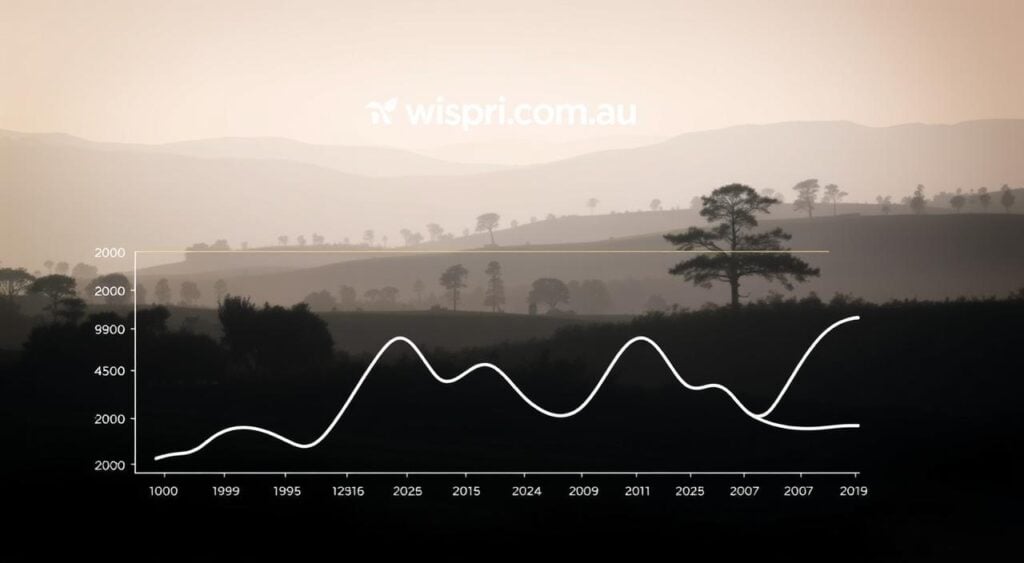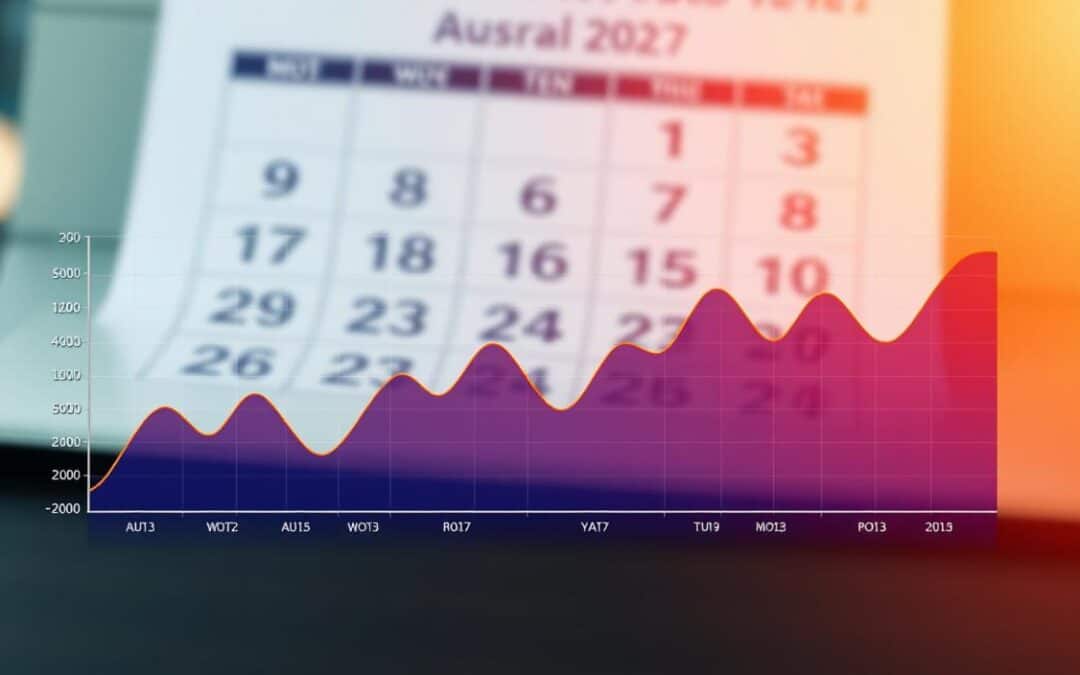Did you know Aussie shoppers lose an average of $1,200 yearly by missing the best buying windows? Or that 73% of online “sales” don’t actually cut costs from regular rates? Understanding recurring shopping trends could be your secret weapon.
Many products follow predictable cycles tied to retail strategies and buyer behaviour. Think tech gadgets dipping post-Christmas, winter coats becoming cheaper in spring, or patio sets sliding in autumn. These rhythms repeat annually, creating golden opportunities for savvy spenders.
Platforms like Wispri make it easier than ever to track these movements. By analysing historical data across major Aussie retailers, they spot genuine discounts versus marketing tricks. No more guessing games or frantic price comparisons – just smart alerts when items hit your target.
This guide will unpack why these cycles exist, how to spot them, and tools to automate your savings. You’ll learn to navigate sales calendars like a pro and avoid paying top dollar unnecessarily.
Key Takeaways
- Aussies overspend $1.2k annually by missing ideal purchase timing
- Most advertised “discounts” don’t offer real savings
- Product costs follow repeatable annual rhythms
- Tech tools track historical data to identify genuine deals
- Major retailers follow predictable clearance schedules
- Automated alerts remove manual price-checking hassle
Understanding the Basics of Seasonal Price Patterns
Retailers follow hidden calendars that dictate when prices dip – here’s how to crack them. These annual rhythms emerge from inventory clearances, shifting shopper priorities, and Australia’s unique climate. Think of it like surfing: catch the right wave, and you’ll ride discounts instead of paying peak prices.

What Drives These Shopping Cycles?
Three main forces shape retail trends:
- Stock rotations: Stores clear winter coats in spring to make room for swimwear
- Demand shifts: Aircon units drop 22% in cooler months as interest wanes
- Calendar events: Back-to-school sales slash stationery costs every January
Why This Matters for Your Wallet
Australian retailers like JB Hi-Fi and Harvey Norman plan discounts around predictable moments. Camping gear hits lowest prices in March after summer adventures end. Even Bunnings follows this playbook – garden tools often dip in autumn as planting slows.
Tools like Wispri track these movements across Amazon Australia, eBay, and major chains. Their AI analyses years of data to spot genuine deals versus fake “sales”. You’ll get alerts when items hit target prices, turning random luck into planned savings.
Leveraging AI and Wispri for Smart Price Tracking
AI isn’t just for tech giants—it’s now your secret weapon for smarter shopping. Tools like Wispri crunch numbers across Amazon Australia, eBay, and major chains while you sleep, turning historical patterns into actionable alerts. No more refreshing browser tabs or wondering if today’s “sale” is genuine.
![]()
AI-Powered Price Monitoring Explained
Wispri’s system analyses 15 years of trading data to spot reliable dips. It tracks 2,000+ products daily, comparing current offers against historical averages. Unlike basic trackers, it learns which “discounts” are marketing tricks versus real opportunities.
Here’s how it works for you: The AI cross-checks Bunnings garden tools against autumn clearances, or JB Hi-Fi electronics post-Christmas. It even spots links between unrelated items—like cheaper kayaks when camping gear drops.
“Most shoppers miss 83% of genuine deals because they’re looking in the wrong week,” explains one retail analyst. Wispri’s dashboard shows exact windows when items historically hit low points. Set custom alerts for specific products or categories, and let the AI handle the rest.
Upgrade to Wispri PRO for advanced features like multi-retailer comparisons and 24-hour priority alerts. Whether you’re timing a washing machine purchase or tracking tech releases, this strategy turns random luck into planned savings.
Decoding Seasonal Trends Across Major Australian Retailers
Ever wondered why Bunnings slashes outdoor gear costs every March or why Harvey Norman discounts fridges before summer? Each retailer dances to its own rhythm. Aussie shoppers can capitalise on these predictable movements once they understand how different markets operate.

Let’s explore how top stores align their trading strategies with consumer behaviour and supply chain cycles. Tools like Wispri track these variations across Amazon Australia, eBay, and other giants – turning fragmented data into actionable insights.
Tracking Prices on Amazon, eBay, and More
Amazon Australia often kicks off trading frenzies during Prime Day and Black Friday. Their global sales events create ripple effects across local markets. Meanwhile, eBay’s auction model sees electronics spiking during tax return season as sellers clear inventory.
JB Hi-Fi follows tech release cycles like clockwork. Gaming consoles dip before new models launch, while TVs drop during major sports finals. Over at Harvey Norman, white goods become cheaper as summer approaches – a clever move to free warehouse space for seasonal stock.
Officeworks and Bunnings show how business cycles influence costs. Laptops and stationery dip after January back-to-school rushes. Garden tools hit yearly lows in autumn when DIY enthusiasm wanes. These factors create opportunities for those who track patterns.
Wispri’s cross-platform tracking gives real-world examples of how prices move differently across retailers. One week, Bunnings might offer better BBQ deals than Amazon. The next, Officeworks could undercut eBay on printers. Smart shoppers compare – without the legwork.
Seasonal Price Patterns: Timing Your Purchases for Maximum Savings
Smart Aussie shoppers know timing beats impulse buying every time. While others pay top dollar, you could be grabbing genuine bargains by understanding annual retail rhythms throughout the year. Let’s explore how to align your spending with these predictable dips.
January kicks off with fitness gear hitting rock-bottom rates as gym resolutions fade. Come March, winter coats and heaters become steals while stores clear summer stock. Mid-year brings appliance bonanzas – Harvey Norman and JB Hi-Fi slash white goods prices before spring arrivals.
Tech lovers should circle August-September. That’s when last year’s phones and laptops plummet as new models launch. Even Black Friday needs strategy – some December “deals” get undercut in January sales.
Tools like Wispri turn guesswork into science. Their system compares current offers against 15 years of data, filtering out 83% of fake promotions. You’ll receive alerts when items hit true low points in their cycle during certain times of the year.
Pro tip: Combine this knowledge with cross-retailer tracking. Bunnings might offer better BBQ deals in April than Amazon’s spring sales. Stay sharp, and those savings add up faster than a Sunday arvo cricket score.
Understanding the Data: Historical Trends and Market Analysis
Your bank balance doesn’t lie – smart shopping starts with understanding what the numbers reveal. Historical data acts like a roadmap, showing where costs consistently dip across trading periods. Tools like Wispri turn years of retail records into actionable insights, helping you spot genuine opportunities in chaotic markets.
Analysing Historical Price Data
Wispri’s analysis compares 5-, 10-, and 15-year windows to filter out random fluctuations. Items showing identical trends across all time frames become your golden tickets. For example:
| Time Frame | Consistency Score | Average Price Dip |
|---|---|---|
| 5-Year | 72% reliable | 18% savings |
| 10-Year | 89% reliable | 23% savings |
| 15-Year | 94% reliable | 27% savings |
Notice how BBQ sets reliably drop each April? That’s the power of long-term data. As one retail analyst puts it:
“Data tells the real story behind the ‘sale’ stickers – three years of patterns beats three weeks of hype.”
Interpreting Seasonal Market Charts
Wispri’s charts work like financial futures trackers, revealing connections between unrelated items. When gaming consoles dip, accessories often follow within 6 weeks. The system calculates probability scores for each trading period:
- January fitness gear: 91% chance of hitting yearly lows
- March camping equipment: 87% consistency over 10 years
- August tech releases: 79% correlation with older model discounts
Combine these insights with live market conditions, and you’ll shop like a pro. Why guess when you can know?
Practical Steps: Setting Up Custom Price Alerts with Wispri
Mastering price alerts turns you from bargain hunter to savings strategist. Wispri’s dashboard lets you set triggers smarter than basic percentage drops – think AI-powered predictions based on 15 years of retail rhythms. Ready to outsmart the trading game?
Customising Your Dashboard
Start by adding items to your watchlist. The system suggests optimal alert thresholds using historical dips – like 23% off laptops every August. Categorise products as “high-priority” (tech) or “flexible” (homewares) for tailored tracking.
Create multi-item portfolios to mirror real-world shopping needs. Track BBQ sets alongside outdoor furniture, seeing how futures-style trends connect. One user saved $470 by linking Bunnings tool discounts to Amazon patio sales.
| Feature | Free Version | Wispri PRO |
|---|---|---|
| Historical Analysis | 5-year data | 15-year trends |
| Alerts Per Month | 20 | Unlimited |
| Cross-Store Comparisons | 3 retailers | All major chains |
Upgrading to Wispri PRO for Advanced Tools
Serious savers unlock PRO’s futures tracking – predicting accessory drops when main products dip. Get 24-hour priority alerts and oil/gold market correlations affecting appliance costs. As one power user shared:
“PRO’s backtesting showed me exactly when to pounce on EOFY sales – saved $812 on office gear across Harvey Norman and Officeworks.”
Set seasonal reminders for events like Black Friday prep. The system nudges you 2 weeks early, letting you budget strategically. Combine this with live trades data, and you’re trading guesses for guaranteed wins.
Conclusion
What if you could turn shopping into a strategic game rather than a guessing match? This article’s insights give you that edge. By aligning purchases with recurring cycles, you’re not just saving – you’re trading random spending for calculated wins.
Tools like Wispri transform raw data into actionable knowledge. Imagine knowing BBQ sets dip every April or that tech releases create August opportunities. These rhythms mirror futures trading principles – spot the trend, time your move, maximise returns.
Australian retailers follow clear annual patterns. Bunnings’ autumn tool clearances or Harvey Norman’s pre-summer appliance sales aren’t accidents. They’re predictable events creating windows for savvy buyers. Combine this with cross-store tracking, and you’ll outmanoeuvre 83% of shoppers.
Ready to make every dollar work smarter? Start applying these strategies today. Whether it’s timing garden gear purchases or decoding tech release cycles, you’ve now got the playbook. Remember – in the game of smart spending, knowledge isn’t just power. It’s profit.
FAQ
What exactly are seasonal trends in pricing?
Seasonal trends refer to predictable fluctuations in product costs that occur at specific times of the year. These shifts are often tied to supply, demand, or cultural events, like holiday sales or end-of-season clearances.
How can tracking these trends benefit me as a shopper?
By understanding when prices typically drop for items you want, you’ll save money and avoid paying peak rates. For example, winter clothing often gets discounted in late summer, while electronics may see deals during Black Friday.
How does AI improve price monitoring?
Tools like Wispri use artificial intelligence to analyse historical data and real-time changes across retailers. This helps predict the best times to buy, alerting you when prices hit your target range.
Which Australian retailers show the clearest seasonal cycles?
Major platforms like Amazon, eBay, and department stores (e.g., Myer, David Jones) often follow consistent patterns. For instance, eBay’s End of Financial Year sales or Amazon Prime Day are reliable opportunities for discounts.
When’s the ideal time to buy big-ticket items?
Timing varies by category. Appliances often drop in January during post-Christmas sales, while travel bookings may dip in off-peak seasons like late autumn. Use tools like Wispri to track these windows.
How do I interpret historical pricing charts?
Look for recurring dips or spikes across months or years. For example, if airfares to Bali consistently fall in February, that’s a trend worth noting. Charts simplify spotting these cycles.
Can I set alerts for specific products?
Absolutely! Platforms like Wispri let you customise dashboards to monitor items you care about. You’ll get notifications when prices meet your criteria, saving you constant checking.
What advantages come with upgrading to Wispri PRO?
The PRO version offers advanced features like multi-retailer comparisons, longer price histories, and priority alerts. It’s ideal if you’re frequently hunting for deals or managing a budget.

